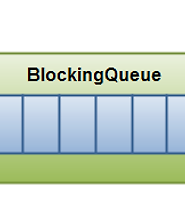| 일 | 월 | 화 | 수 | 목 | 금 | 토 |
|---|---|---|---|---|---|---|
| 1 | 2 | 3 | 4 | |||
| 5 | 6 | 7 | 8 | 9 | 10 | 11 |
| 12 | 13 | 14 | 15 | 16 | 17 | 18 |
| 19 | 20 | 21 | 22 | 23 | 24 | 25 |
| 26 | 27 | 28 | 29 | 30 | 31 |
- 스칼라
- 주키퍼
- 그라파나
- Hyperledger fabric gossip protocol
- Play2
- CORDA
- Play2 로 웹 개발
- akka 강좌
- Actor
- 스칼라 강좌
- hyperledger fabric
- 파이썬 머신러닝
- Adapter 패턴
- Akka
- Golang
- 파이썬
- 이더리움
- 스칼라 동시성
- 스위프트
- 파이썬 데이터분석
- play2 강좌
- 플레이프레임워크
- 하이퍼레저 패브릭
- 파이썬 강좌
- 안드로이드 웹뷰
- play 강좌
- 엔터프라이즈 블록체인
- 파이썬 동시성
- 블록체인
- 하이브리드앱
- Today
- Total
HAMA 블로그
스칼라 강좌 (37) 동시성을 위한 ExecutorContext 본문
ExecutorContext
스칼라도 JVM 상에 돌아가는 언어 (네이티브 스칼라도 개발중이긴 하다.)라 자바의 라이브러리를 사용 할 수 도 있으며 자신의 라이브러리가 있다면 주로 그것을 사용하는 편 이다.
쓰레드 생성 관련해서도 자바에 있는 Executor 와 ExecutorService 를 사용할수도 있겠지만 스칼라에서는 기능이 보강된 자신만의 것도 있다. 이름하여 ExecutorContext!!
이번 포스트에서는 ExecutorContext 등 스칼라의 저레벨 (쓰레드를 직접 사용하는것은 원시레벨) 동시성 도구들에 대해 알아보자.
먼저 자바의 경우
Executor 는 그냥 Runnable 타입을 내부 쓰레드풀을 이용해서 실행시켜주는거다.기본 Executor구현으로는 ThreadPoolExecutor (JDK 5), ForkJoinPool (JDK 7) 등이 있다.
ExecutorService 는 Executor의 서브인터페이스로써 라이프싸이클 관리 (셧다운등) + Future + Callable 을 이용해서 리턴값 받기 정도가 추가되었다.
이제 부터 스칼라식의 코딩을 살펴보자. (이 포스트는 기초적인 내용은 대략 안다고 가정하고 코드만 살펴봄)
서론
스칼라에 있는 ExecutionContext 가 먼지 알아보자.
1.scala.concurrent 패키지에 있는 Executor 객체와 비슷한 기능을 제공하는 ExecutionContext 는
주로 implicit 매개 변수로 사용된다. ExecutionContext는 두개의 추상 메소드 execute (Java Executor 메소드와 동일)와 reportFailure (Throwable 객체를 이용해서 일부 태스크가 예외를 throw 할 때마다 호출 됨)가 있다.
2. ExecutionContext에는 Java Executor 또는 ExecutorService (Java와 Scala 사이의 다리 역할을 함)에서 ExecutionContext 객체를 만들기 위해 몇 가지 메소드가 추가된 companion 객체가 있다.
3. ExecutionContext companion 객체는 내부적으로 ForkJoinPool 인스턴스를 사용하는 global이라는 기본 실행 컨텍스트를 포함한다.
코드로 말해요.
기본 쓰레드 생성
val hello = new Thread(new Runnable {
def run() {
println("hello world")
}
})
hello.start()
ExecutorService 활용
import java.net.{Socket, ServerSocket}
import java.util.concurrent.{Executors, ExecutorService}
import java.util.Date
class NetworkService(port: Int, poolSize: Int) extends Runnable {
val serverSocket = new ServerSocket(port)
val pool: ExecutorService = Executors.newFixedThreadPool(poolSize)
def run() {
try {
while (true) {
// This will block until a connection comes in.
val socket = serverSocket.accept()
pool.execute(new Handler(socket))
}
} finally {
pool.shutdown()
}
}
}
class Handler(socket: Socket) extends Runnable {
def message = (Thread.currentThread.getName() + "\n").getBytes
def run() {
socket.getOutputStream.write(message)
socket.getOutputStream.close()
}
}
(new NetworkService(2020, 2)).run
- 서버소켓을 생성하는 예제이다.
- NetworkService 클래스에서 클라이언트를 받아서 Pool 에 있는 쓰레드를 활용하여 멀티쓰레딩 해주고있다.
- 제공되는 고정 크기 Pool (Executors.newFixedThreadPool(poolSize)) 사용했기 때문에 기존 쓰레드의 재사용이 가능하지만 개별 쓰레드에서 굉장히 오래 걸리는 처리를 한다면 사용 가능한 쓰레드가 모잘라서 클라이언트는 화가 날 것이다.
- 핸들러에서는 메세지를 받아서 종료하는 매우 단순한 작업을 하고 있다. 물론 Handler 에서도 while 을 돈다면 서버와 계속 통신할 수 있겠다. 이런 경우는 쓰레드풀을 사용하는 의미가 없어지긴 하겠지만
ForkJoinPool 활용
import scala.concurrent._
val executor = new java.util.concurrent.ForkJoinPool
executor.execute(new Runnable {
def run() = log("This task is run asynchronously.")
})
Java7 부터 등장한 ForkJoinPool 을 사용하고 있다. 이것에 관해 포스팅한 자료가 있으니 참고하도록 하자. ForkJoinPool 이란? -> http://hamait.tistory.com/612
ExecutionContext.global 활용
import scala.concurrent._
val ectx = ExecutionContext.global
ectx.execute(new Runnable {
def run() = log("Running on the execution context.")
})
- ForkJoinPool 을 사용하고 있는 global
ExecutionContext 생성하기
import scala.concurrent._
val ectx = ExecutionContext.fromExecutorService(new forkjoin.ForkJoinPool)
ectx.execute(new Runnable {
def run() = log("Running on the execution context again.")
})
- ForkJoinPool 을 이용한 ExecutorService 를 통해서 ExecutionContext 를 생성
ExecutionContext 활용
import scala.concurrent._
def execute(body: =>Unit) = ExecutionContext.global.execute(new Runnable {
def run() = body
})
for (i <- 0 until 32) execute {
Thread.sleep(2000)
log(s"Task $i completed.")
}
Thread.sleep(10000)
- execute : 함수를 넘기면 자동으로 쓰레드풀을 사용해서 실행해주는 함수
- 0 ~ 32 까지, 즉 32번 execute 를 실행한다.
- execute 뒤에 나오는 { } 사이의 것은 함수 리터럴인데 다음과 같이 정의 되는 것과 같다.
def func(i : Int) = {
Thread.sleep(2000)
log(s"Task $i completed.")
}
for (i <- 0 until 32) execute {func(i)}
- execute 뒤에 { } 는 스칼라에서는 하나의 매개변수만 있는 함수호출시 a () 대신 a {} 를 사용 할 수 도 있기 때문에 이상한게 아니다. 이전 포스트를 참고하자 : 스칼라에서 {} 익숙해지기
레퍼런스:
https://blog.knoldus.com/2016/07/25/java-executor-vs-scala-executioncontext/
Learning Concurrent Programming in Scala by Aleksandar Prokopec
https://twitter.github.io/scala_school/ko/concurrency.html (Scala school)
'Scala' 카테고리의 다른 글
| 스칼라 강좌 (39) 동시성을 위한 Observable (0) | 2017.02.21 |
|---|---|
| 스칼라 강좌 (38) 동시성을 위한 Collections (0) | 2017.02.21 |
| 스칼라 강좌 (36) {} 익숙해지기, {} 는 어디서 사용되는가? (0) | 2017.02.17 |
| 스칼라 강좌 (35) lambda 익숙해지기 (0) | 2017.02.17 |
| 스칼라 강좌 (34) 동시성을 위한 Future (0) | 2017.02.16 |

